
Jeff Minter is an English video game designer and programmer who often goes by the name Yak. He is the founder of software house Llamasoft and has created dozens of games during his career, which began in 1981 with games for the ZX80.

Rick Dangerous is a platform game developed by Core Design for the Acorn Archimedes, Amiga, Atari ST, Amstrad CPC, ZX Spectrum, Commodore 64, and MS-DOS. The game was released in 1989 and published by MicroProse on the Firebird Software label in the UK, and on the MicroPlay label in America. It was also published in Spain by Erbe Software. Later, it was released with two other games, Stunt Car Racer and MicroProse Soccer, on the Commodore 64 Powerplay 64 cartridge. The game was followed by a sequel, Rick Dangerous 2, in 1990. Loosely based on the Indiana Jones film franchise, the game received mixed reviews from critics.
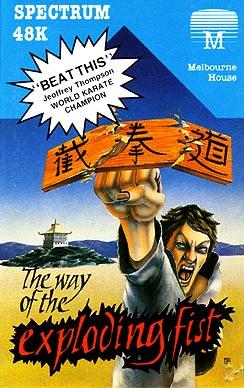
The Way of the Exploding Fist is a 1985 fighting game based on Japanese martial arts developed by Beam Software, by a team consisting of Gregg Barnett, Bruce Bayley, Neil Brennan and David Johnston. Originally developed on the Commodore 64 and published in May 1985 by Melbourne House, ports were made for Amstrad CPC, ZX Spectrum, BBC Micro, Acorn Electron and Commodore 16.
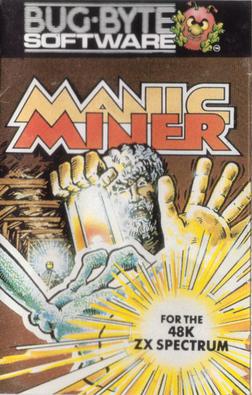
Manic Miner is a platform video game written for the ZX Spectrum by Matthew Smith. It was published by Bug-Byte in 1983, then later the same year by Software Projects. The first game in the Miner Willy series, the design was inspired by Miner 2049er (1982) for the Atari 8-bit family. Retro Gamer called Manic Miner one of the most influential platform games of all time, and it has been ported to numerous home computers, video game consoles, and mobile phones.

Ghostbusters is a licensed game by Activision based on the film of the same name. It was designed by David Crane and released for several home computer platforms in 1984, and later for video game console systems, including the Atari 2600, Master System and Nintendo Entertainment System. The primary target was the Commodore 64 and the programmer for the initial version of the game was Adam Bellin. All versions of the game were released in the USA except for the Amstrad CPC and ZX Spectrum versions, which were released only in Europe, and the MSX version, which was released only in Europe, South America, and Japan.

Zzap!64 was a computer games magazine covering games on the Commodore International series of computers, especially the Commodore 64 (C64). It was published in the UK by Newsfield Publications Ltd and later by Europress Impact.

Uridium is a science fiction side-scrolling shoot 'em up originally designed by Andrew Braybrook for the Commodore 64, and later ported to other 8-bit machines. It consists of fifteen levels, each named after a metal element, with the last level being called Uridium. The manual quotes Robert Orchard, who invented the name as saying "I really thought it existed".

The Horace video game series was created in the 1980s by William Tang for Beam Software. The series comprised Hungry Horace, Horace Goes Skiing and Horace and the Spiders.

Split Personalities is a sliding square puzzle game that involves piecing together the faces of famous personalities and politicians. The game was developed for the ZX Spectrum by Ernieware and published by Domark, who also ported the game to the Amstrad CPC, Commodore 64, and Commodore Plus/4. The game was later released in 1993 for the Game Boy under the name Splitz.
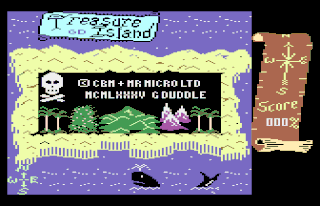
Treasure Island is a 1984 computer game based on the 1883 novel Treasure Island by Robert Louis Stevenson. In the game, the player takes on the role of the book's protagonist Jim Hawkins and has to battle through hordes of pirates before a final showdown with Long John Silver. The game uses a flip-screen style.
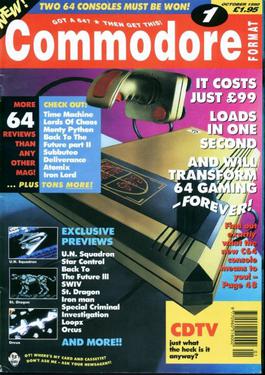
Commodore Format was a British magazine for users of the Commodore 64 home computer. It was published on the third Thursday of every month. All 61 issues were produced by Future plc. These came towards the end of the machine's commercial life - from October 1990 until October 1995.

Yie Ar Kung-Fu II: The Emperor Yie-Gah is a video game developed and released by Konami in 1986 as a sequel to 1985's Yie Ar Kung-Fu. Rather than a pure fighting game as the original, it is a beat 'em up. It was released for the Commodore 64, MSX, Amstrad CPC, ZX Spectrum, BBC Micro and Acorn Electron home computer systems and featured a different approach to the game. In France, the video game was also released for the Thomson computers.

Empire! is a space combat and trading video game designed by Andrew Glaister and published by Firebird Software in 1986 for the Commodore 64, ZX Spectrum, and Amstrad CPC.

A View to a Kill are two separate video games released in 1985 and based on the James Bond film A View to a Kill. The first, an action game titled A View to a Kill: The Computer Game, was developed and published by Domark. It was available for the ZX Spectrum, Amstrad CPC, Commodore 64, MSX, and Oric. The second game, James Bond 007: A View to a Kill, is a text-based adventure for MS-DOS, Macintosh, and Apple II. It was developed by Angelsoft, and published by Mindscape.
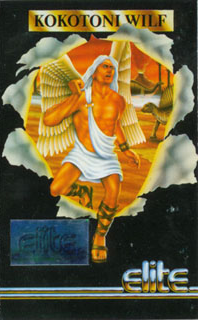
Kokotoni Wilf is an action-adventure game released by Elite Systems in 1984 for the Amstrad CPC, Commodore 64, and ZX Spectrum home computers. The game was inspired by Jet Set Willy.

Light Force is a 1986 vertically scrolling shooter designed by Greg Follis and Roy Carter, developed by their company Gargoyle Games, and published under their Faster Than Light imprint. It was released for the Amstrad CPC, Commodore 64, and ZX Spectrum platforms.
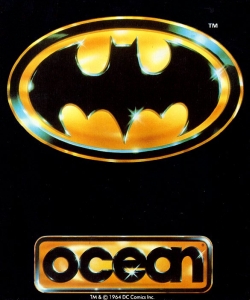
Batman is an action video game developed and published by Ocean Software based on the 1989 film of the same name. It was released on 11 September 1989 for the Commodore 64 and ZX Spectrum with Amiga, Amstrad CPC, Atari ST, MS-DOS and MSX versions following soon after.

The Real Ghostbusters is a 1987 shoot 'em up arcade game developed and published by Data East in the United States. It is loosely based on the animated series of the same name. In Japan, Data East released it as a non-Ghostbusters arcade game under the title Meikyuu Hunter G. In 1989, Activision published The Real Ghostbusters for Amiga, Amstrad CPC, Atari ST, Commodore 64, and ZX Spectrum.

Judge Dredd is a 1990 platform shoot 'em up video game based on the character of the same name. It was developed by Random Access and published by Virgin Mastertronic. It was released in Europe in 1990, for the Amiga, Atari ST, Commodore 64, and ZX Spectrum. Critics found the gameplay repetitive.



















